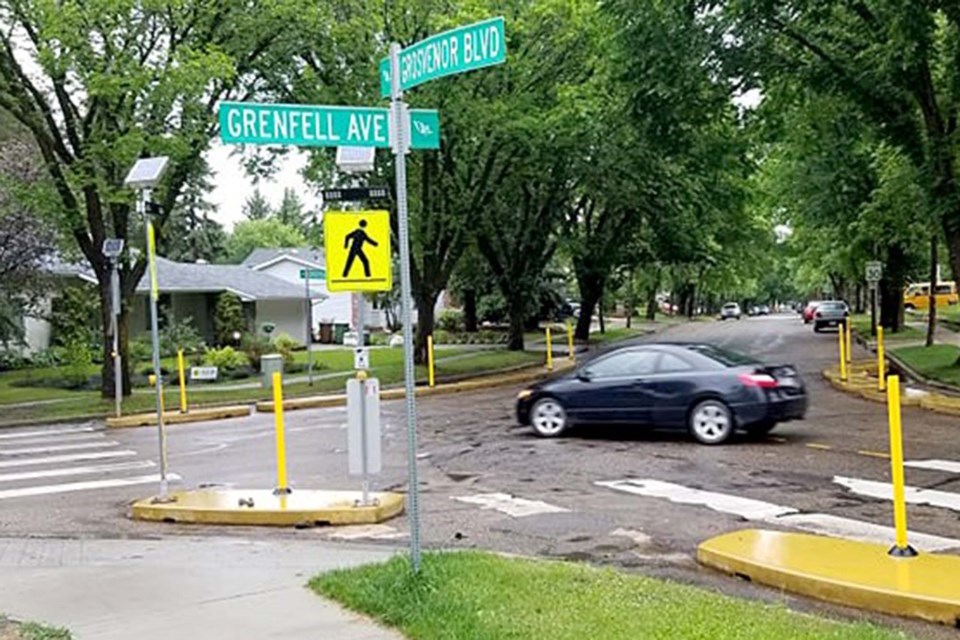As St. Albert residents reckon with what it could mean to rename roads and neighbourhoods through the city’s public consultation process, communities across Canada are grappling with similar questions.
A survey conducted by the city-hired naming engagement consultants found 76 cases of renaming work across the country, including street names, communities, schools, sports teams, parks and bridges.
Though the list is not exhaustive, it demonstrates the ways St. Albert’s community is not alone in thinking through how the past is commemorated today.
Across the country, the instances of renaming largely centre around extensive research and public discussion about how to proceed with a potential change.
“If you’re going to take on a project, you do the research necessary, and then you move forward,” Mi'kmaw Elder Daniel Paul said. “You have to backup what you’re going to have to say if you’re going to speak the truth.”
Paul has been advocating for years to have Cornwallis Street and Cornwallis Park in Halifax, N.S., renamed, and over the past two years has seen his calls come to fruition.
Both the park and street shared a namesake: British governor of Nova Scotia Edward Cornwallis, who in 1749 issued a proclamation promising a bounty for each Mi'kmaw person killed.
The ultimate decision to rename both stems from an April 2020 report requested in 2017 by the Halifax regional council. After what Paul described as a “long and hard process,” he said he is happy to see the change.
“When you’re removing things that cause people a great deal of harm for a long period of time, it gives you some satisfaction to see them gone,” Paul said.
While the park has since been renamed Peace and Friendship Park, a new name for the street has not yet been selected. Back in January, an online survey from the Halifax Regional Municipality collected over 2,000 suggestions for new names.
Paul noted there has been resistance from some groups to the renaming, adding "you're not going to change everybody’s opinion."
Paul has devoted much work to chronicling the history of figures such as Cornwallis in his book book We Were Not the Savages, which he originally published in 1993.
He said key to the process of reevaluating what names are commemorated involves becoming absorbed in history, and doing ample research.
“You need to start talking about history as it happened,” Paul said.
Another instance of municipal renaming took place in the City of Ottawa last year with what was formerly known as Langevin Avenue (named after named after Hector-Louis Langevin, an architect of the residential school system).
The new name, Commanda Way, was selected to commemorate an Algonquin Elder named William Commanda from Kitigan Zibi Anishinabeg.
A further instance of renaming in Canada occurred in 2019, when what was known as Amherst Street in Montreal was renamed to Atateken Street.
Its former namesake, Jeffrey Amherst, was a British general who advocated for the use of smallpox-infected blankets to kill Indigenous peoples.
The street’s new name, Atateken, translates in the Mohawk language to “brothers and sisters.”
“When we have to say words in languages that are not our own … and when we encode places with those types of names that are unfamiliar to us, it does a couple of things,” Brenda Macdougall, an expert in Métis and First Nations history, and professor at the University of Ottawa, said.
“It starts to work to normalize that language … It’s compelling you to begin experiencing that language as a living language and not just something that somebody else speaks.
“It’s inviting you to learn something about what that word means and to start to experience an Indigenous space in ways that you hadn’t imagined before.”
In 2017 Macdougall wrote an online article called “Naming and Renaming: Confronting Canada’s Past” where she mulled the potential of renaming.
“Canada is one long renaming project,” Macdougall said in 2017. “Every location in this country had an Indigenous name in an Indigenous language, and colonial authorities, deeming those names irrelevant, renamed them in their own language and cultural perspective.”
Speaking to The Gazette in a recent interview, Macdougall said the practice of renaming reflects the ways that our understanding of history is always shaped by the present, and therefore is subject to change.
“People tend to see history as a static entity — that something happened in the past and … it’s a factual reality, but the truth of history is that we revise our historical interpretations based on our contemporary realities of the world,” Macdougall said.
She gave the example of Louis Riel, where Riel was executed publicly in 1885, but the interpretation around why he was hanged and his larger role in history can be seen from multiple perspectives — and indeed has.
Historical renaming
In 1987 what was known as Frobisher Bay was restored with its former name in the Inuit language: Iqaluit.
Named in 1942 for explorer Martin Frobisher, Macdougall said returning the Inuktitut name in 1987 allowed the Inuit to once again “define the context of their own geography.”
“I think it’s changed for the better in the sense that we’re becoming more conscious of the Arctic as being an Inuit space,” Macdougall said.
Ultimately, Macdougall said renaming can be a way of honouring how new understandings of history are a natural part of the process of reckoning with the past.
“It’s part of how we start to make sense of who we are now, and who we want to be in the future,” Macdougall said.




